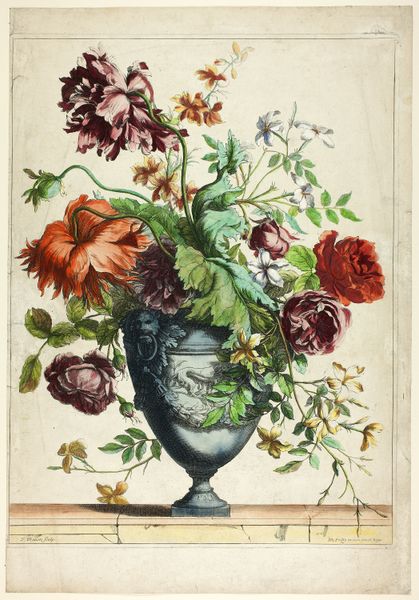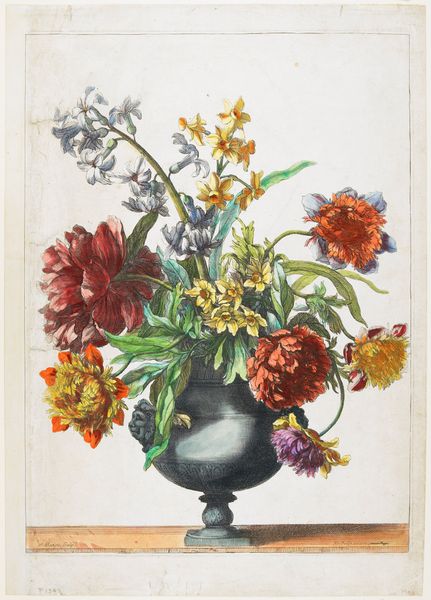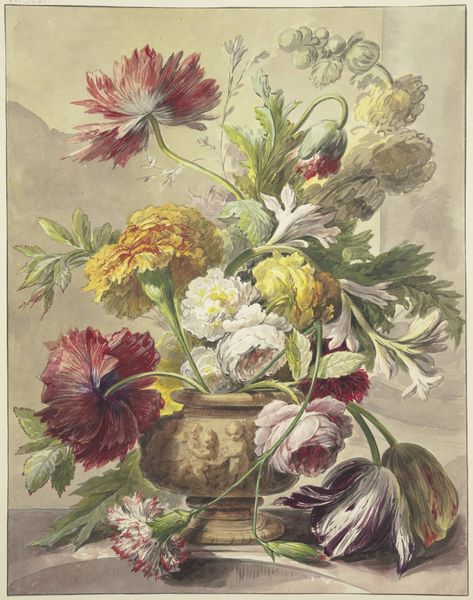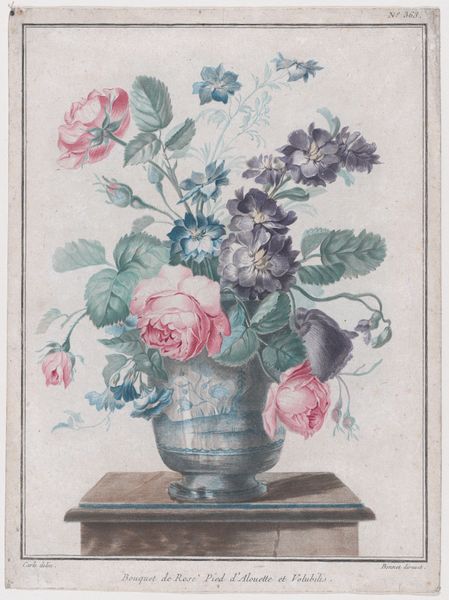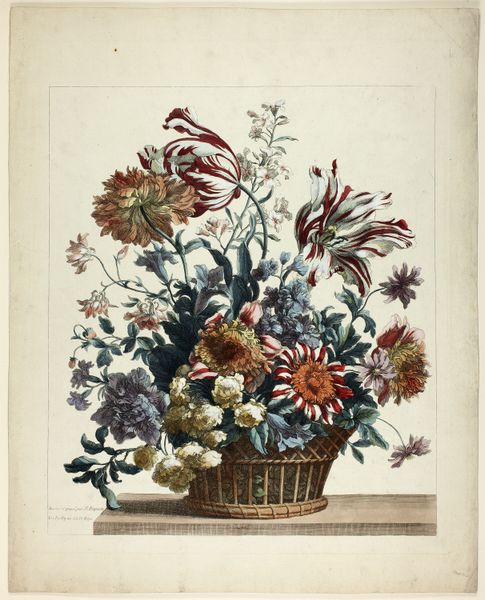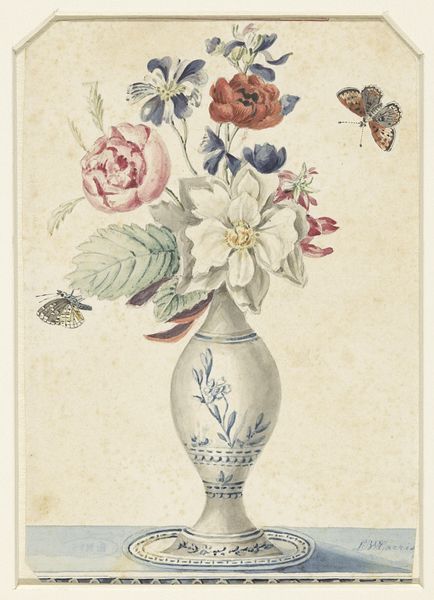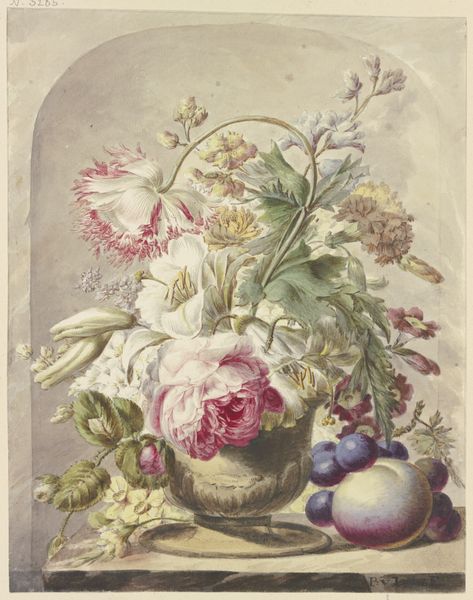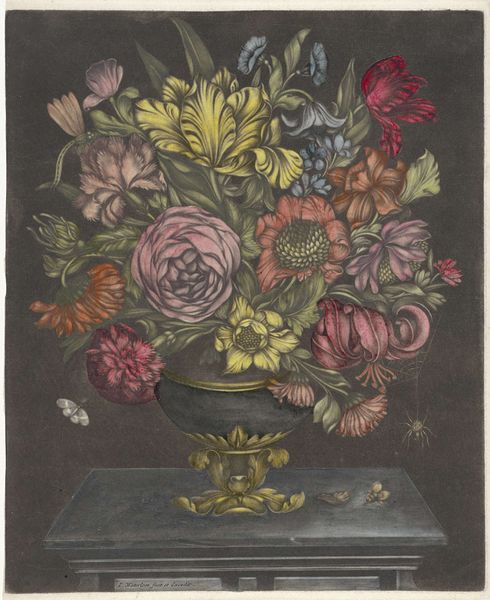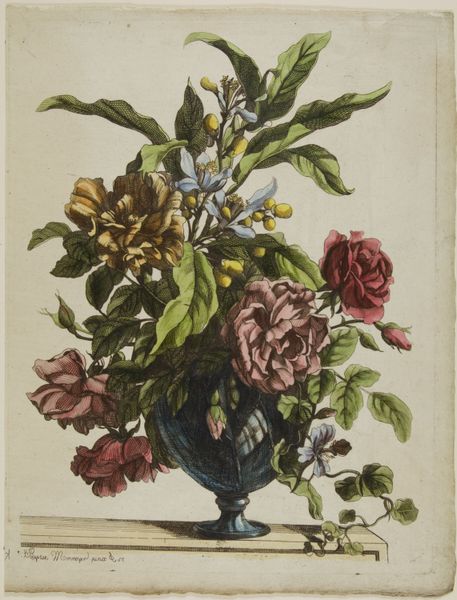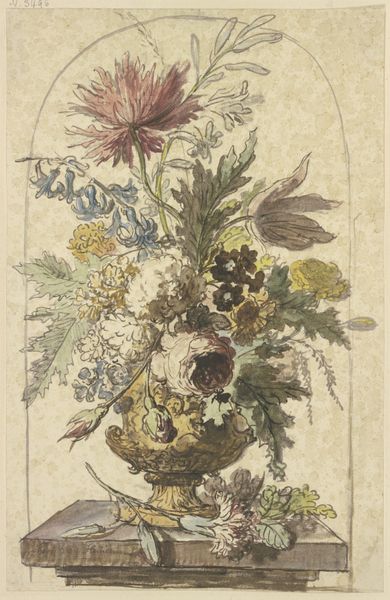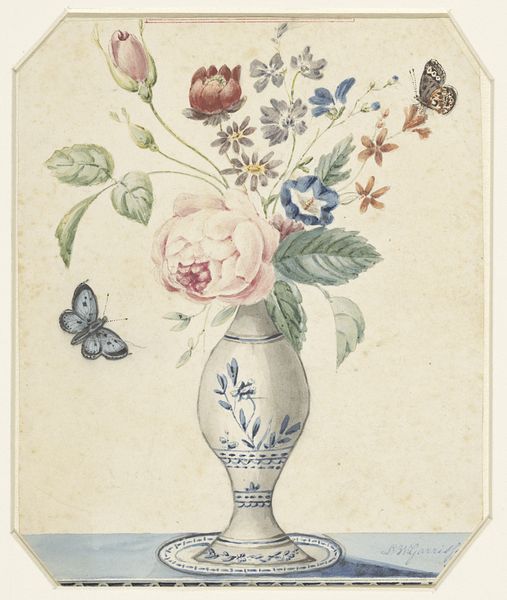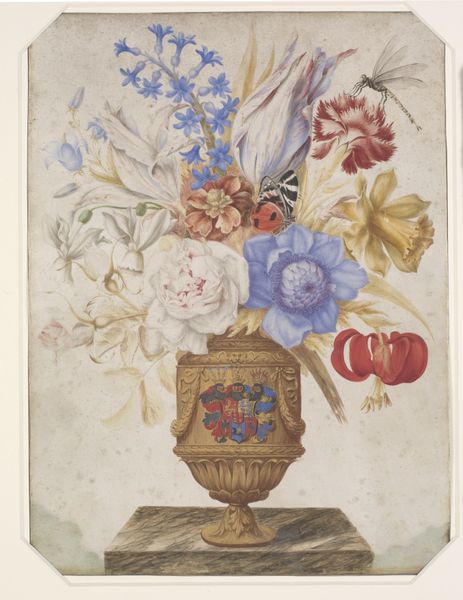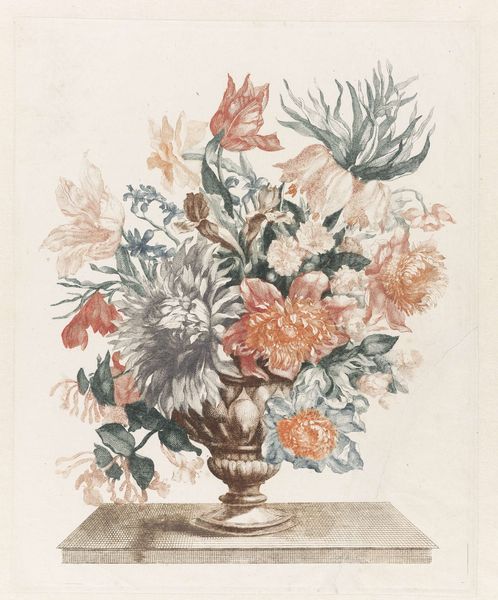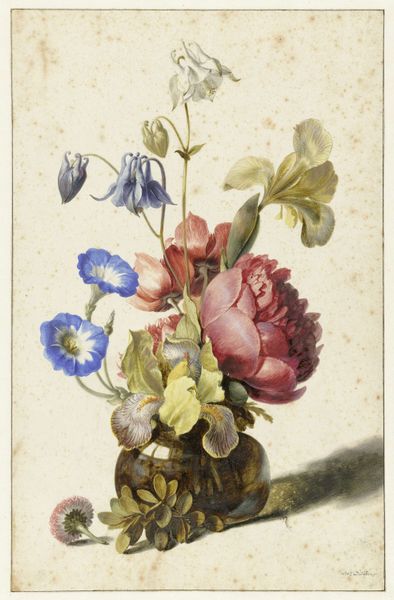
print, watercolor, engraving
#
baroque
# print
#
watercolor
#
watercolour illustration
#
engraving
Dimensions: 19 1/2 x 14 3/4 in. (49.53 x 37.47 cm) (plate)
Copyright: Public Domain
Curator: Immediately striking. Such a potent feeling of abundance, even exuberance. Editor: Agreed! What we are looking at here is a print titled "Vase of Flowers" made sometime between 1675 and 1685 by an anonymous artist. The piece in the collection of the Minneapolis Institute of Art combines engraving and watercolor techniques. Curator: It’s fascinating how the individual blooms – the tulips, gladiolus, those velvety fringed petals on the lower left – jostle for attention yet exist in such precise harmony. Do you think the riot of colour speaks to specific values, ideals? Editor: Absolutely. The Dutch Golden Age, which coincides with this print’s creation, saw a flourishing of the merchant class. Collecting became widespread, not just paintings but also natural specimens. Flowers, particularly exotic blooms, carried social currency. Displaying them declared worldly reach and knowledge, similar to how we display digital influence today. The vase itself reinforces the classical aspirations of the era with what appear to be dancing nymphs decorating the front. Curator: Precisely. Even now, floral arrangements are rarely neutral objects. Think of the symbolic language – roses signify love, lilies often represent mourning. Here, the artist utilizes familiar motifs to evoke a celebration of life, certainly, but perhaps something grander? The very human impulse to harness and comprehend nature? Editor: An impulse very much shaped by the market forces that drove botanical interest. Still life, including floral arrangements, became a powerful tool to communicate wealth and cultivated taste, accessible to a wider audience through prints such as these. Curator: A sentiment visualized in something exquisite and intimate, made more precious through watercolour. To see that combination here adds to the emotional experience in viewing it today, centuries later. Editor: Indeed, it remains vibrant—testament to both the artist's skill and its lasting cultural impact.
Comments
minneapolisinstituteofart almost 2 years ago
⋮
Botanical illustrators working in the fifteenth and sixteenth centuries devoted themselves to the medicinal qualities of plants and sought to render plant structure and function as precisely as they could. Later, European explorers brought specimens back from exotic locales, and artists carefully reproduced them for an audience fascinated by new discoveries. By the eighteenth and nineteenth centuries, artists had shifted their emphasis from scientific illustration to the innate beauty of the plant or flower. The Minneapolis Institute of Arts is fortunate to possess an impressive collection of more than 2,000 botanical prints and drawings.
Join the conversation
Join millions of artists and users on Artera today and experience the ultimate creative platform.
